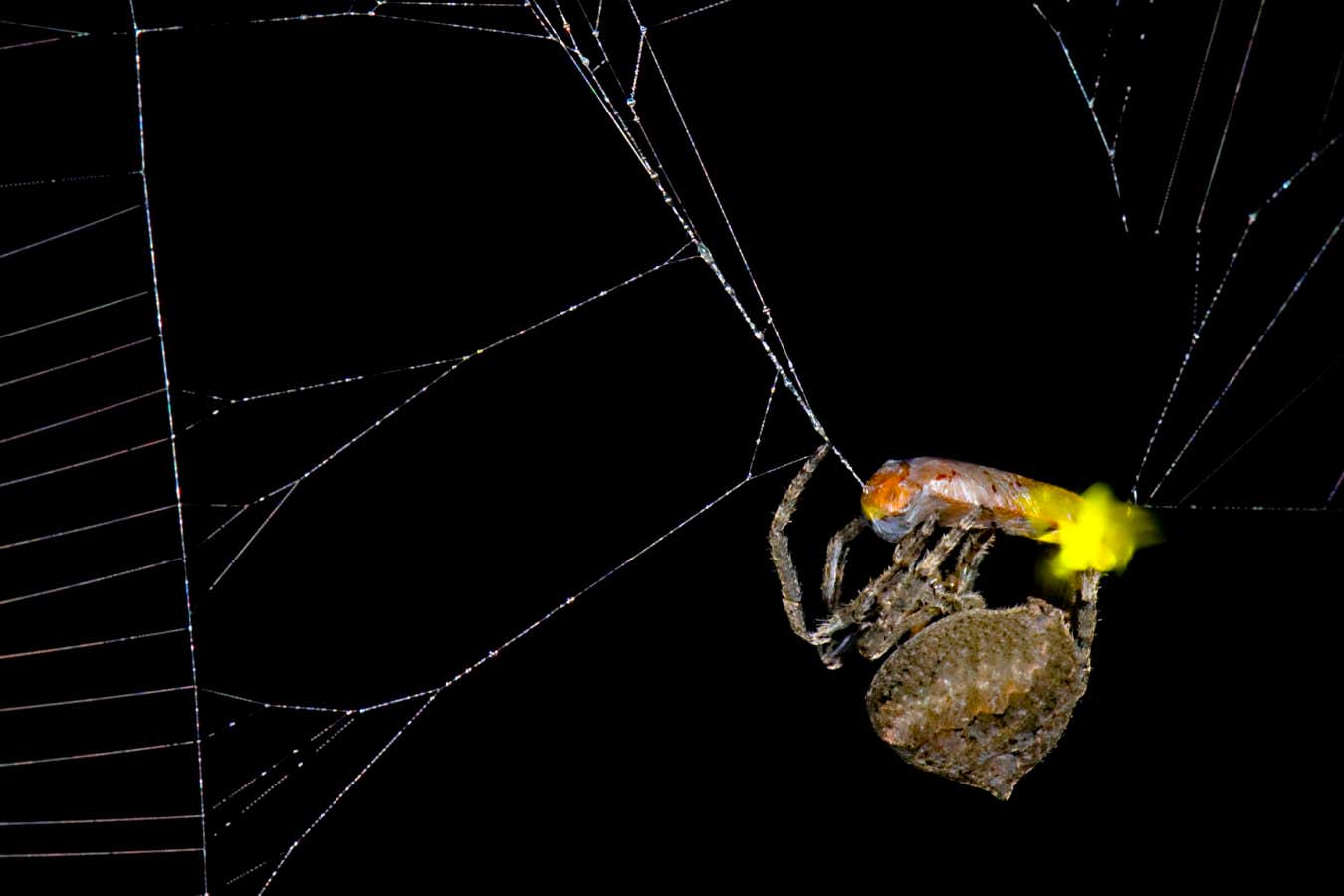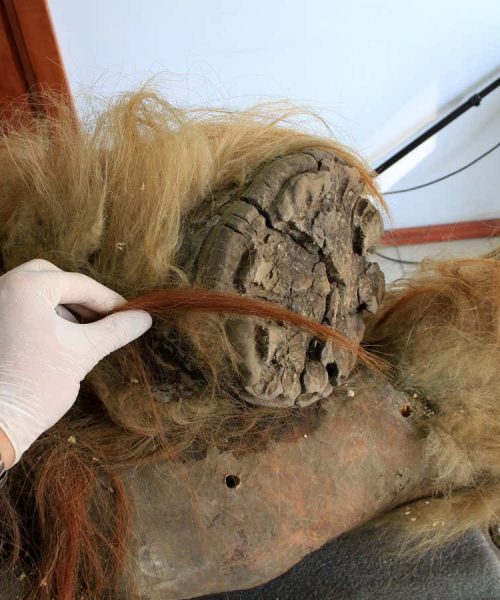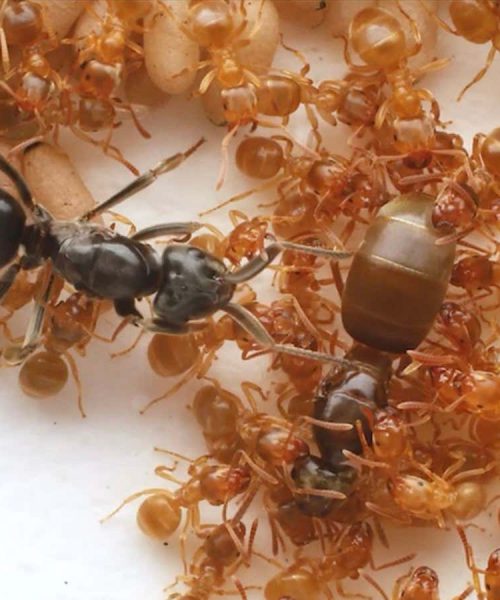
An orb-weaver spider wraps up its flashing prey
Xinhua Fu
Once orb-weaver spiders ensnare male fireflies in their webs, they turn the doomed insects into bait, using their telltale flashing to lure in more meals.
Xinhua Fu at Huazhong Agricultural University in China noticed male fireflies (Abscondita terminalis), but no females of the species, often got stuck in the web of an orb-weaver spider (Araneus ventricosus), and he wondered if the male insects were being lured into the trap. Both males and females of this firefly species use flashing signals in courtship, and females’ light shows attract males to their location. So Fu and his colleagues investigated how the spiders might be exploiting this love language.
Advertisement
In a stretch of farmland in Hubei Province, China, the team ran a series of experiments on 161 different webs, some with and some without spiders. The researchers placed a male firefly – some of which had their bright abdomens blacked out with ink – in each web. They found webs with both a spider and a freely flashing firefly attracted more male fireflies, compared to webs with no spiders present or with only non-flashing fireflies.
Also, the male fireflies entangled in a spider-occupied web had an unusual flash signal. It looked more like that of females, with one pulse instead of two. But fireflies in an empty web flashed normally.
This suggests the spiders are manipulating the male fireflies’ signals to mimic those of females, luring in other males searching for mates, says team member Daiqin Li at Hubei University. Precisely how the spider alters its immobilised prey’s signals is still unknown, but the researchers have some ideas.
“The spider’s venom or the bite itself may lead to changes in the ensnared males’ flashing pattern,” says Li.
Li is interested in seeing if other firefly-eating spiders use a similar tactic. Other animals may use captured prey as lures by capitalising on different types of signals, he says, such as sounds or the release of pheromones.
“[The findings] once again demonstrate that spiders are not passive foragers,” says Mariella Herberstein at Macquarie University in Australia. “We are discovering more and more cases of highly complex and selective feeding techniques.”
Topics:





